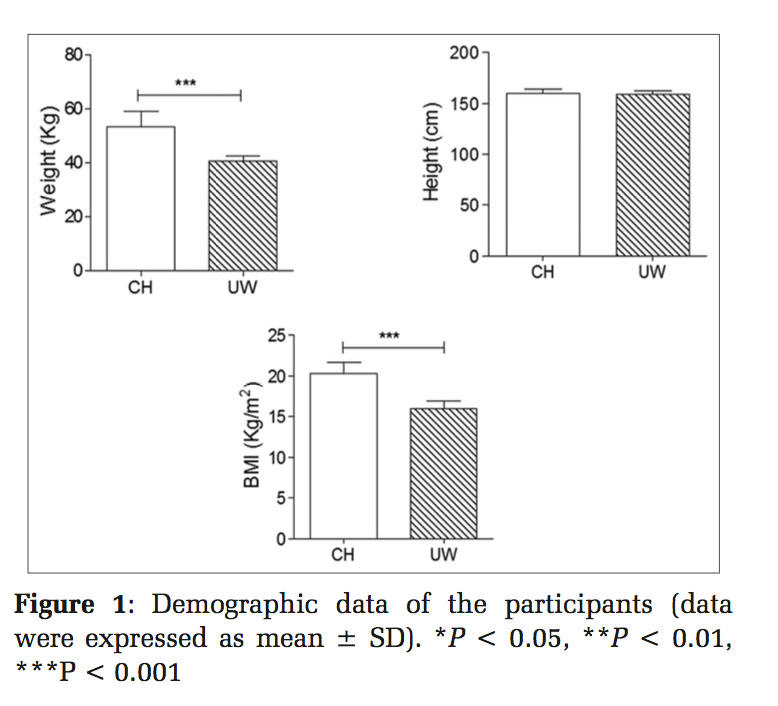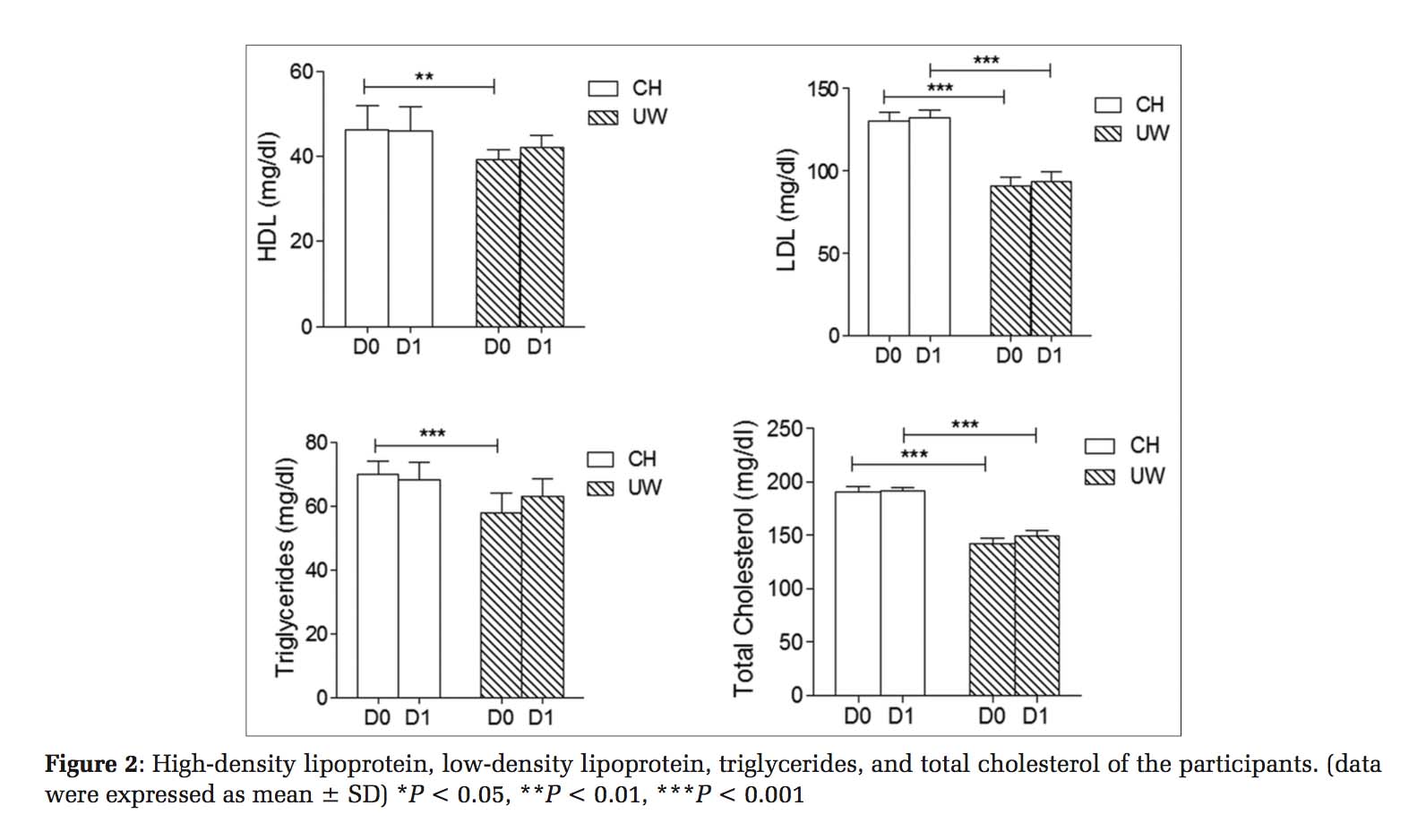

Journal of Medical Sciences and Health
DOI: 10.46347/jmsh.2017.v03i03.009
Year: 2017, Volume: 3, Issue: 3, Pages: 43-46
Short communications/brief reports
S Saritha1, Kumar Sai Sailesh2, J K Mukkadan3
1Post Graduate Student, Department of Physiology, Little Flower Institute of Medical Sciences and Research,Angamaly, Kerala, India,
2Assistant Professor, Department of Physiology, D M Wayanad Institute of MedicalSciences, Wayanad, Kerala, India,
3Research Director, Little Flower Institute of Medical Sciences and Research,Angamaly, Kerala, India
Address for correspondence:
Sai Sailesh kumar G, Assistant Professor, Department of Physiology, DM Wayanad Institute of Medical Sciences, Naseera Nagar, Meppadi, Wayanad, Kerala, India. E-mail: [email protected]
Background and Objectives: Weight gain and weight loss form complex health issues. Animal studies provided preliminary evidence for the regulation of total cholesterol and TG through vestibular stimulation. However, human studies on the same area are sparse. Hence, the present study was aimed to assess the impact of vestibular stimulation on lipid profile in underweight females.
Materials and Methods: A total of 8 underweight females and 8 healthy, age-matched, females were included in the present study after obtaining voluntary informed consent. Vestibular stimulation was administered by making the participants to swing on a swing in back-to-front direction. Total cholesterol, triglycerides, high-density lipoprotein (HDL), and low-density lipoprotein (LDL) were estimated by standard methods.
Results: Total cholesterol and LDL levels were significantly lower in underweight females before and after the intervention P < 0.001). HDL and triglycerides levels are significantly lower (P < 0.001) in underweight females before the intervention. The difference was not statistically significant after the intervention.
Conclusion: We have observed an increase in triglycerides and HDL and no change in LDL and total cholesterol followed by vestibular stimulation. We recommend further detailed studies in this area for a better understanding of vestibular influences on lipid profile which may help to develop a simple, novel supplementary therapy in the management of metabolic disorders.
KEY WORDS:Linear vestibular stimulation, lipid profile, underweight females.
According to the WHO definition, BMI is the simple index of weight for height that commonly used to classify overweight and obesity in adults.[1] BMI is defined as the person weight in kilogram divided by the square of the height in m2.[2] Intake of nutrients is under complex control involving signal from central nervous system and peripheral nervous system. Vestibular system having extensive interaction between the hypothalamus, dorsal raphae nucleus, and tractus solitarius regulates food intake.[3] Weight gain and weight loss form complex health issues. The current animal study observed that vestibular stimulation can effectively regulate total cholesterol and TG which helps to maintain healthy body weight.[4] Animal studies provided preliminary
evidence for the regulation of total cholesterol and TG through vestibular stimulation. However, human studies on the same area are sparse. Hence, the present study was aimed to assess the impact of vestibular stimulation on lipid profile in underweight females.
The present experimental study was conducted at the Department of Physiology, Little Flower Institute of Medical Sciences and Research, Angamaly.
Participants
A total of 8 underweight females and 8 healthy, age-matched, females were included in the present study after obtaining voluntary informed consent. The following criteria were used for recruiting the underweight females. Inclusion criteria
The following inclusion criteria were included in the study:
Exclusion criteria The following exclusion criteria were excluded from the study:
After recording baseline values in all the groups, vestibular stimulation was administered for intervention groups for 60 days. Post-intervention values were recorded in all the groups and compared.
Linear vestibular stimulation
Vestibular stimulation was administered by making the participants to swing on a swing in back-to-front direction (according to comfort), as standardized by the previous methods.[5-7]
Outcome measures
Total cholesterol was estimated by cholesterol oxidase-phenol+aminophenazone (CHOD PAP) method, triglycerides was estimated by glycerol- 3-phosphate oxidase-phenol+aminophenazone (GPO-PAP) method, and high-density lipoprotein (HDL) and low-density lipoprotein (LDL) were estimated by precipitation method.
Data analysis
Data were analyzed by SPSS 20.0. Unpaired t-test was used to observe the significance of difference in demographic data. Two-way ANOVA followed by Bonferroni post-test was used to observe the significance of difference in our come measures.
Results
Figure 1 presents demographic data of the participants. Body weight and BMI was significantly lower in underweight females when compared with healthy females. Height was not significantly different. Figure 2 presents HDL, LDL, triglycerides, and total cholesterol of the participants. Total cholesterol and LDL levels were significantly lower in underweight females before and after the intervention P < 0.001). HDL and triglycerides levels are significantly lower (P < 0.001) in underweight females before the intervention. The difference was not statistically significant after the intervention.
The current study was undertaken to evaluate the impact of vestibular stimulation on lipid profile. We have observed an increase in the triglycerides and HDL followed by vestibular stimulation. When compared with healthy controls, the baseline values of these parameters were significantly lower before the intervention. Followed by vestibular stimulation, there was an increase in the triglycerides and HDL, so the difference was not statistically significant when compared with control group after the intervention. No significant change was observed in total cholesterol and LDL. Earlier studies reported that vestibular stimulation regulates taste aversion and food intake.[8-14] Vestibular stimulation was reported to modulate the biochemical parameters.[15-18] Earlier animals study applied caloric vestibular stimulation in an animal model of hyperlipidemia. It was reported that there was a significant decrease in total cholesterol and triglycerides and a significant decrease in the HDL and LDL.[4] In the present study, vestibular stimulation was administered using a swing, and we have observed an increase in the triglycerides and HDL. It may be due to the difference in the type of stimulation that influences the lipid profile. Limitations The major limitation of our study was less sample size.


We have observed an increase in triglycerides and HDL and no change in LDL and total cholesterol followed by vestibular stimulation. We recommend further detailed studies in this area for a better understanding of vestibular influences on lipid profile which may help to develop a simple, novel supplementary therapy in the management of metabolic disorders.
Subscribe now for latest articles and news.